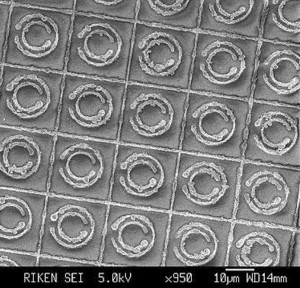Repulsive Casimir Force I: Opposing boundaries
![]() Scalar Fields with Dirichlet (D) or Neumann (N) boundary conditions:
Scalar Fields with Dirichlet (D) or Neumann (N) boundary conditions:
Similar boundaries (DD or NN) lead to attraction, while opposing boundaries (DN) result in repulsion.
![]() In Lifshitz (DLP) theory, this is obtained by an intervening medium with dielectric constant intermediate to the boundaries, as in the case of liquid helium climbing (wetting) a wall. (dielectric constants: solid > helium > air).
In Lifshitz (DLP) theory, this is obtained by an intervening medium with dielectric constant intermediate to the boundaries, as in the case of liquid helium climbing (wetting) a wall. (dielectric constants: solid > helium > air).
"Verification of Lifshitz theory of the van der Waals Potential using liquid-helium films,"
E.S. Sabisky and C.H. Anderson, Phys. Rev. A 7, 790 (1973)
"Measured long-range repulsive Casimir–Lifshitz forces,"
J. N. Munday, F. Capasso & V. A. Parsegian, Nature 457, 170 (2009) (gold, bromobenzene, silica)
![]() Opposition of hydrophobic/hydrophilic surfaces in oil-water mixtures close to criticality:
Opposition of hydrophobic/hydrophilic surfaces in oil-water mixtures close to criticality:
"Critical Casimir forces in colloidal suspensions on chemically patterned surfaces,"
F. Soyka, O. Zvyagolskaya, C. Hertlein, L. Helden, & C. Bechinger, Phys. Rev. Lett. 101, 208301 (2008) (movie)
![]() Immersing MEMs in fluids is not practical. Is repulsion across vacuum possible?
Immersing MEMs in fluids is not practical. Is repulsion across vacuum possible?
"Van der Waals forces and zero-point energy for dielectric and permeable materials,"
T.H. Boyer, Phys. Rev. A 9, 2078 (1974) (A perfect conductor repels a perfect magnet)
A material with large permeability is required for repulsion, but in ordinary materials permeability is close to one.
Metamaterials, incorporating arrays of microengineered circuitry mimic, at certain frequencies, a strong magnetic response and have been proposed as candidates for Casimir repulsion across vacuum.
